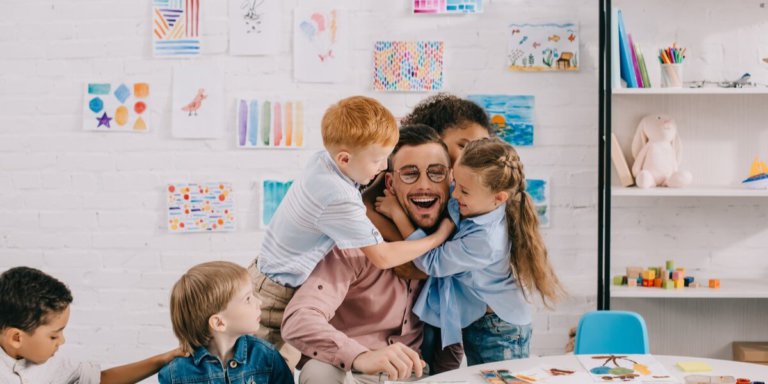
For kids to feel relaxed and engaged, it’s imperative that they’re safe and secure in a clean and well-maintained classroom environment.
Teachers can go one step further by adding more elements and making simple changes to a classroom to make it more welcoming.
Research shows that the classroom environment really does matter. According to Dr. Sheryl Reinisch, Dean of the College of Education at Concordia University-Portland, “studies indicate that high-quality classroom environments help children feel safe, secure, and valued.
“As a result, self-esteem increases and students are motivated to engage in the learning process.”
Kids will be heading back to school very soon, so kick off the semester with a bang by trying some of these tips to create a more positive and welcoming classroom environment.
Make the classroom environment feel like home
Already planning for the next school year? Bringing a #fish in the classroom can teach kids how to be responsible pet owners. Follow these tips to maintain a healthy aquarium in the classroom: https://t.co/dMLtbICJq0 pic.twitter.com/hOiht8Nn1s
— Hartz (@HartzPets) July 8, 2019
Rather than a rigid, stark classroom where kids are likely to feel uncomfortable and scared, make it a more relaxed, homely classroom environment, similar to a family living room.
Studies have shown that adding plants, pets (like fish or a hamster), having comfortable learning spaces and displaying children’s artwork on the walls has a positive effect on students.
In a study by Beth Daly and Suzanne Suggs in 2010, 75 elementary teachers’ attitudes and experiences were examined regarding the usage of pets in the classroom.
“The majority of teachers surveyed believed that the use of live pets in the classroom contributed positively to increased empathy, as well as socio‐emotional development, in students, much of which is supported by current research.”
Flexible and comfortable learning spaces

Flexible and comfortable spots make a warm classroom environment. Source: Shutterstock
Not all kids are able to learn well in the traditional classroom environment, and it also depends on the lesson being taught.
For some classes, it may be more beneficial to re-arrange the furniture to allow students to work collaboratively, or for desks to be arranged in a semi-circle shape.
Making the furniture and learning space more flexible and movable will allow for a seamless transition between different classes and lessons, plus it allows students to relax according to their needs.
There can also be spots within a classroom with comfortable furniture like beanbags or cushions that kids can go to when they need a break from sitting at their desks, or during reading time.
Some younger kids get bored and restless when they’re forced to sit in one place for a long period of time, so flexible classroom designs can help with that.
According to Edutopia, “Flexibility, combined with characteristics like acoustics and air quality, has a real impact on student achievement. If used properly, flexible classrooms produce better academic outcomes among primary school children than more traditional, static classroom designs.”
Create a more inclusive classroom environment
Got some brand new posters and maps for the classroom this year. One world map even comes with an app that allows you to learn facts about the various nations and cultures! 🗺📜 pic.twitter.com/Z4DCwmDfP4
— Sean McDowell (@The_MrMcDowell) August 3, 2019
School children will not be comfortable in a classroom if they feel out of place or if they’re made to feel different from their peers.
Encouraging them to embrace their cultural differences – as well as celebrate them – is the ideal way to make sure it’s a welcoming classroom environment for all.
According to Room 241, “For young children, classroom and educational design needs to take into consideration the wide range of different home backgrounds and lifestyles while introducing them to the school environment for the first time.”
One tip is to install a bulletin board where kids can bring in photos of their family and pets, or photos that represent their cultural heritage.
Teachers can also hold regular discussions that encourage students to talk about themselves and demonstrate their talents.
According to ThoughtCo, “Talk about varying cultural backgrounds, body image, body types, talents, strengths, and weaknesses. Provide opportunities for your learners to share their strengths and weaknesses.
“The child who may not be able to run fast may be able to draw very well. These conversations always need to be held in a positive light. Understanding diversity is a lifelong skill children will always benefit from. It builds trust and acceptance in the classroom.”
Liked this? Then you’ll love…
4 flex-furniture classroom designs that could catch on
Study shows that classrooms with high ceilings and outdoor areas spur creativity







